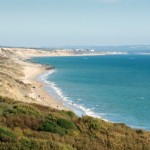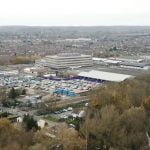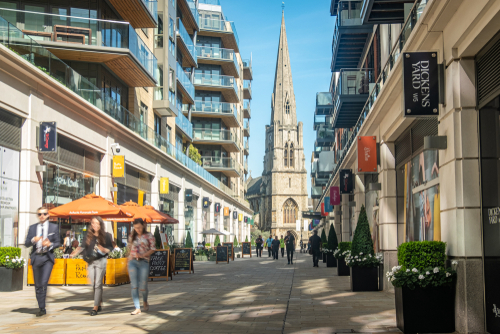
A quick guide to the Borough of Ealing
Overview
The London Borough of Ealing is located in central west London. Ealing essentially comprises of its seven main towns, which are Acton, Ealing, Greenford, Hanwell, Northolt, Perivale and Southall. The borough borders the London Boroughs of Hillingdon to the west; Harrow and Brent to the north; Hammersmith and Fulham to the east and Hounslow to the south. The London Borough of Ealing was formed in 1965 by the merger of the Municipal Boroughs of Ealing, Southall and Acton, and has a total area of almost 56 sq. km. Ealing is sometimes referred to as the “Queen of the Suburbs” due to its many parks and tree-lined streets, a term coined at the turn of the 20th century. The population of the Borough of Ealing at the 2011 UK Census was 338,349.
A Very Brief History
Archaeological finds in the Ealing area date back to the Iron Age, up to 7000 years ago. Then, the area was part of a vast forest where there were no permanent settlements. Its thought the first quasi-permanent community was probably established during the 6th century. By the time of the Domesday Book in 1086, there were two manors in the Ealing area, Greenford and Hanwell. A manor at this time would consist of no more than a landowner (the Lord), his family, a few labourers and perhaps a handful of tenant farmers. By the 12th century, Ealing was established as a small village with a church (St Mary’s).
In 1599, a local census in the Ealing area revealed that there were around 430 people living around St Mary’s, with a few additional people in the small scattered settlements of Perivale, Greenford and Northolt. The Ealing area was still very rural at this time, although more of the forest had been cultivated than in previous times. The villages of Ealing, Hanwell, Acton and Southall all lay on the main road between London and Oxford, and experienced travellers passing through on an increasingly frequent basis. Greenford, Perivale and Northolt, were more off the beaten track and would remain as relatively small villages for more than the next 300 years.
Life did not change that much for people around Ealing, until the end of the 18th Century, when the Grand Union Canal was built. The canal ran from Braunston in Northamptonshire to the River Thames at Brentford. The increased connectivity in the area helped to stimulate industry just the Industrial Revolution began to gather steam. In 1838, Ealing got its first railway line as it was en route of the Great Western Railway (GWR) from Paddington to Taplow (Buckinghamshire). The initial impact was minor, as the village populations still only grew relatively slowly. However, by the end of the 19th-century, improved transport links in the form of trams, buses and trains made access to London much easier. Ealing became a desirable residential centre for commuters working in London. Acton and Southall were developing as industrial centres but Greenford, Perivale and Northolt remained small agriculture villages.
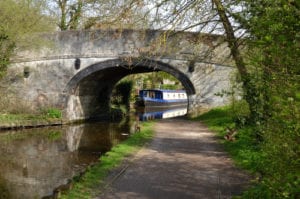
The 18th-century Grand Union Canal near Perivale Editorial Credit: PawelByl – Sutterstock.com
In 1902, the famous Ealing Studios were opened, which continues to produce films to this day. However, the studio’s heydays were between the 1930s and the 1950s, when classic films, such as Kind Hearts and Coronets, The Lavender Hill Mob and The Ladykillers, were made on location. Collectively, such films became eponymously known as ‘The Ealing Comedies’.
After WWI, Ealing began to expand rapidly. In 1926, Hanwell, Greenford and Perivale were merged with Ealing, while Northolt was incorporated into the district 2 years later. Through the 1920s and 1930s, there was a massive expansion of industry in Greenford and Perivale, with some in Acton and Southall.
The bombing of the capital during WW2 saw less damage to Ealing than elsewhere in London. After the War, the remaining rural areas of Ealing and Northolt were used to build council houses on to help satisfy the heavy demand for suitable accommodation. In the post War years, large-scale immigration, especially from India, Pakistan, Poland and the Caribbean further pushed the demand for even more houses. In 1965, the old boroughs of Ealing, Acton and Southall were abolished and were merged into one new local authority; the London Borough of Ealing.
Today, Ealing is twinned with the district of Bielany, Warsaw, Masovian Voivodeship, Poland; the town of Marcq-en-Barœul, Nord, Hauts-de-France, France and the district of Steinfurt, North Rhine-Westphalia, Germany.
Getting Around!
The Borough of Ealing is well connected to central London by railway and the underground, which like the rest of London is the easiest method of getting around. Driving can prove expensive when you add up costs such as the congestion charge, tolls and high parking costs, etc. Buses are probably the cheapest form of transport, particularly if you are making multiple journeys and will obviously be better for sightseeing. However, the bus may well be much slower than the train, so if times an issue better to take the latter. Additionally, for bus travel, you will probably need some form of a payment card. This could add significant cost, if you are an overseas traveller, using a foreign bank card.
Train
There are plenty National Rail stations in Ealing, which are operated by the Great Western Railway (GWR). There are also plenty of London Underground stations, since the Piccadilly line, Central line and the District Line all pass through the Borough of Ealing. The stations in the Borough of Ealing are:
National Railway Stations
- Acton Central
- Acton Main Line
- Castle Bar Park
- Drayton Green
- Ealing Broadway
- Greenford
- Hanwell
- Northolt Park
- Sudbury Hill
- South Acton
- Southall
- South Greenford
- West Ealing
Underground (Tube) Stations
- Acton Town
- Boston Manor
- Chiswick Park
- Ealing Broadway
- Ealing Common
- Greenford
- Hanger Lane
- North Acton
- North Ealing
- Northfields
- Northolt
- Park Royal
- Perivale
- Sudbury Hill
- South Ealing
- West Acton
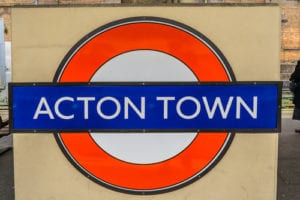
Underground station in the Borough of Ealing Editorial Credit: Shutterstock.com
Things to see and do!
Some of the parks, open spaces and tourist attractions in or close to the Borough of Ealing are:
Parks and open spaces
- Northala Fields – Playgrounds, lakes & a visitor centre
- Richmond Park – Expansive walled park, home to hundreds of deer
- Acton Park – A large Victorian park, which has recreational facilities and ecological, horticultural, landscape and heritage features
- Ealing Common – A 47-acre open space close to the town of Ealing
- Walpole Park – Large public park with 2 ponds, an 18th-century manor house, plus a cafe and children’s playground
- Brent Lodge Park – Tranquil riverside park with meadows, a maze, an animal centre & playground
- Blondin Park – A 8.5-hectare public park in Northfields
- Barham Park – Victorian-era park with mature trees & a walled garden, walking paths & a children’s play area
Tourist Attractions
- Hanwell Zoo (formerly Brent Lodge Park Animal Centre) – Popular attraction located in Brent Lodge Park, Hanwell
- Gunnersbury Museum and Park – Mansion House showcasing local history and archaeology, costume and fine art
- Pitzhanger Manor & Gallery – Contemporary art centre & Georgian manor
- Gurdwara Sri Guru Singh Sabha – The biggest Sikh temple in Europe, is a popular meeting place and has an extensive library
- London Motorcycle Museum – Museum showcasing more than 170 classic motorcycles, including some unique prototypes
- Osterley House and Park – National Trust neo-classical house with landscaped park and gardens
- Boston Manor House – Restored Jacobean manor house built with adjoining park, ornamental gardens, nature trail and children’s play area
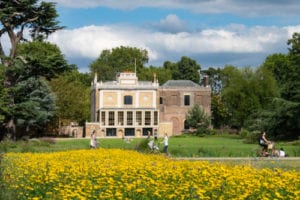
The Georgian Pitzhanger Manor and Gallery in Ealing Editorial Credit: Shutterstock.com
Famous People
Famous people who were born, have been or are resident in Ealing include:
- Denholm Elliot – well-known TV and film actor, co-star of the Indiana Jones films.
- Henry Fielding – famous 18th-century playwright, magistrate and novelist, lived in Fordhook near Acton.
- Steve McQueen – contemporary film director, went to school in Ealing and grew up in Hanwell.
- Bombardier Billy Wells – heavyweight boxing champion, but perhaps more famously the ‘gongman’ for the J. Arthur Rank films. Born and lived most of his life in Ealing.
- Freddie Mercury – famed lead singer and rock musician of the super-group ‘Queen’, studied at Ealing Art College.
- Thomas Huxley – a renowned biologist, a strong proponent of Charles Darwin’s work, was born in Ealing.
- Lady Byron – Lord Byron’s widow, founded an industrial school, the first of its kind, in Ealing, in 1834.
Did you know?
- First opened in 1902, Ealing Studios are the world’s oldest film studios still in production
- Ealing was dubbed ‘Queen of the Suburbs’ in the early 1900s, due to its greenery
- Opened in Hanwell in 1856, the ‘Cuckoo School’ for poor children, once had Charlie Chaplin as a pupil
- Southall has the biggest Sikh temple in Europe, the Gurdwara Sri Guru Singh Sabh
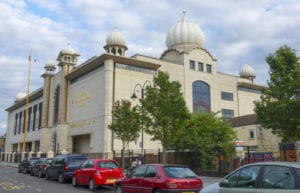
Gurdwara Sri Guru Singh Sabh – biggest Sikh temple in Europe Editorial credit: Shutterstock.com
Where to stay?
There is a good choice of hostel-style accommodation in or close to the Borough of Ealing. There’s also plenty of B & B/Guesthouse/Basic Hotels style accommodation on offer. If you’re looking for a bit more luxury then there’s also plenty 3 and 4 hotel-style accommodation. In general, Ealing has some of the cheapest accommodation costs across the Greater London area. An alternative to a hotel would be to rent an apartment – most have no minimum let period. While the majority of apartments cater to couples, some can accommodate up to 6 people. Indicative prices for the most readily available types of accommodation/per night, based on 2 adults sharing, unless otherwise indicated, are as follows:
Hostel: £20 – £40 (1 or 2 people sharing)
B & B/Guesthouse/Basic Hotel: £45 – £90
3/4 Star Hotel: £90 – £200
Apartments vary greatly based on no. of available berths, location and standard
If you enjoyed this London guide, check out some of our other London guides by clicking the link below.


